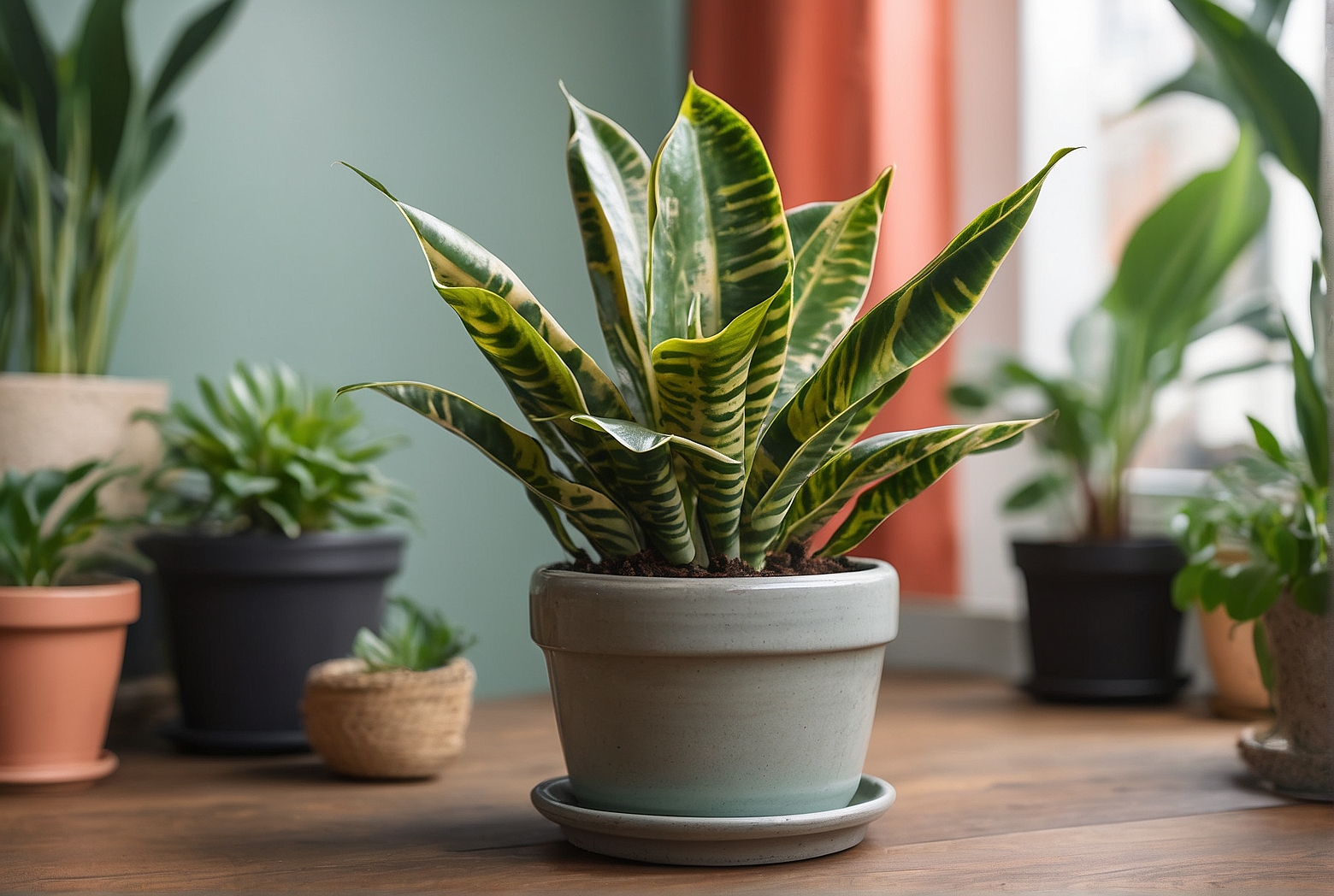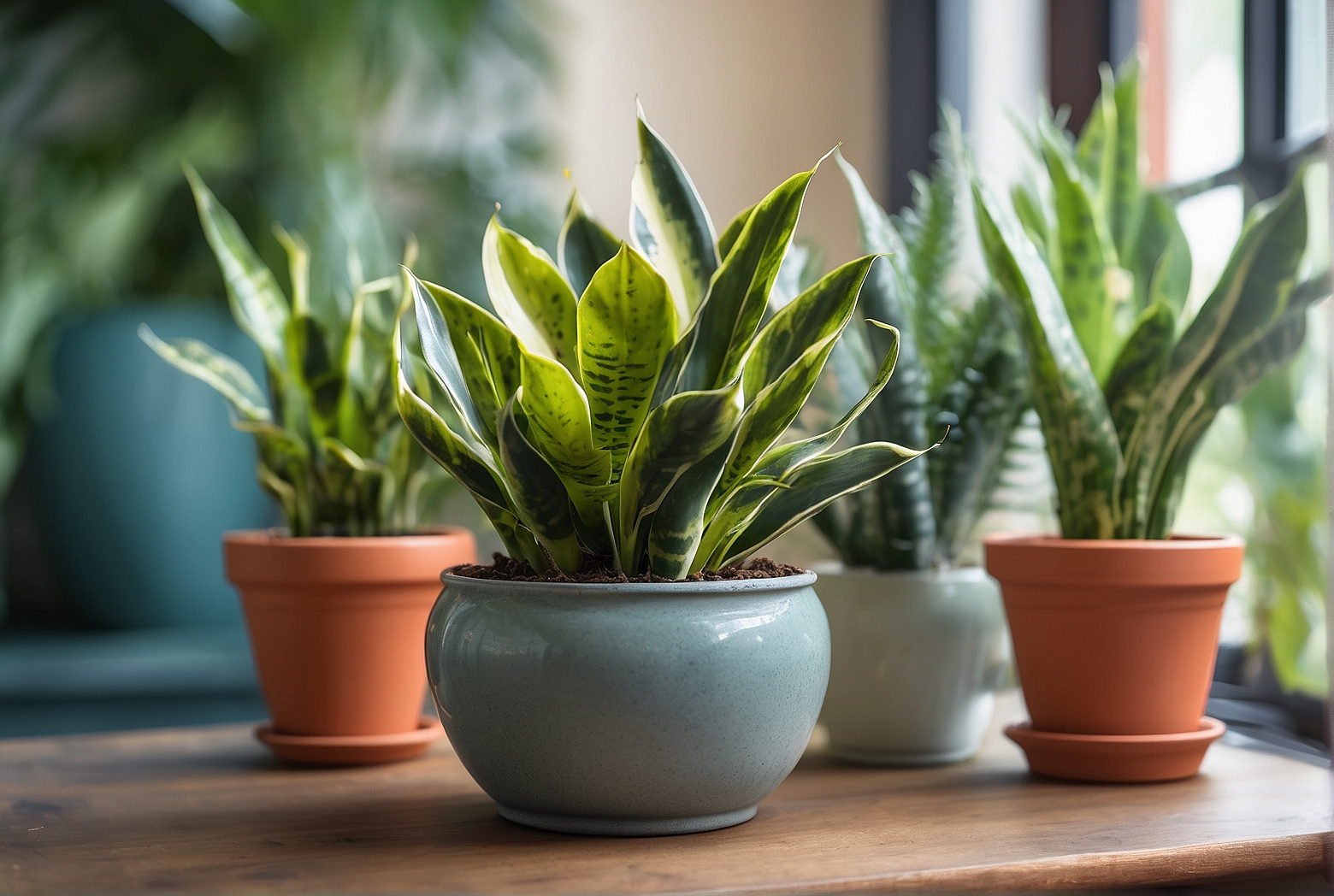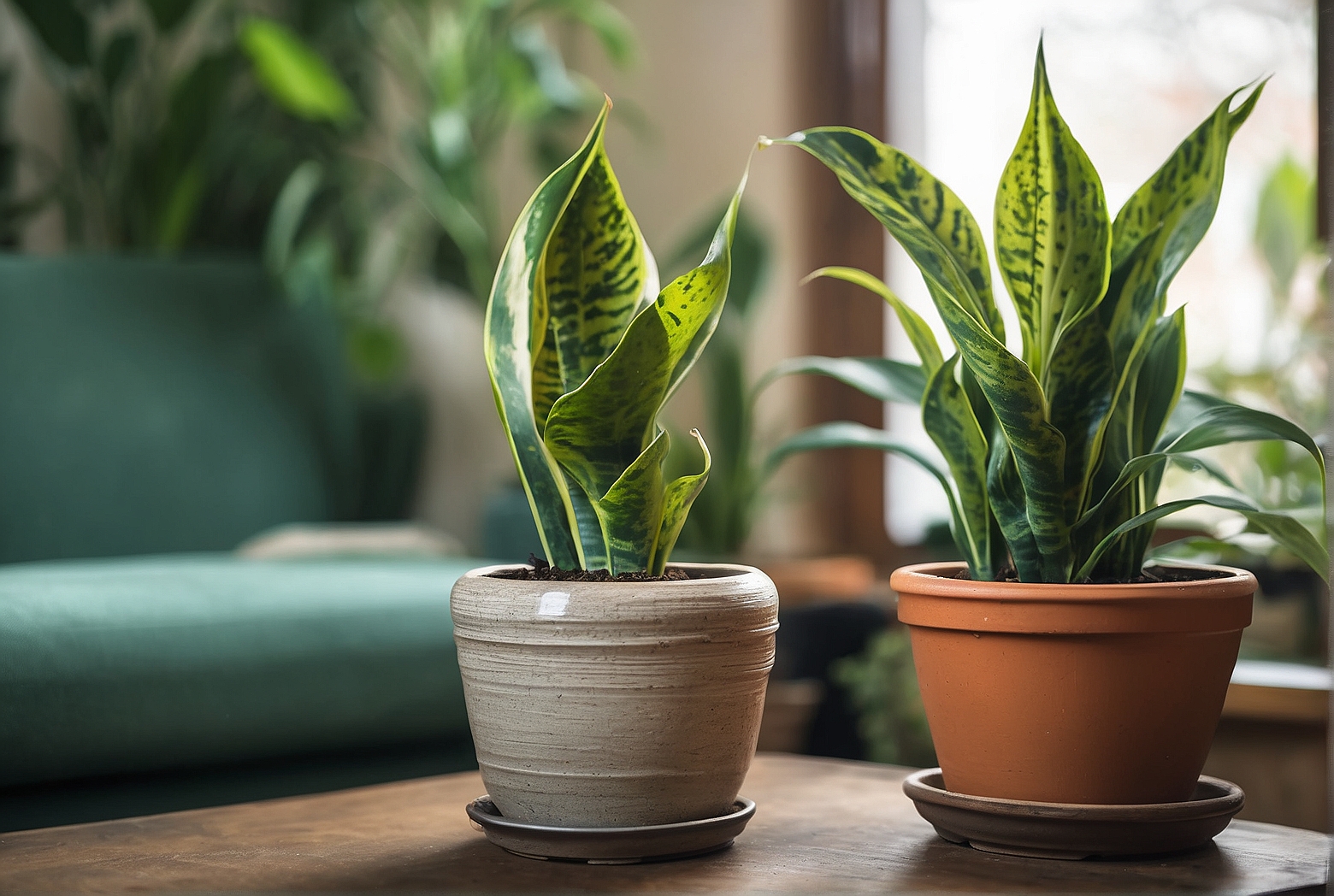Last Updated on April 18, 2024 by Tony Manhart
Are you a new plant parent looking to bring some greenery into your home? Look no further than the snake plant! With its tall, striking leaves and low-maintenance nature, the snake plant is the perfect addition to any indoor space. In this beginner’s guide, you’ll learn all the essentials of caring for a snake plant indoors, from sunlight and watering requirements to troubleshooting common issues. So, get ready to nurture your new leafy friend and create a vibrant and thriving environment right in your own home!
Choosing the Right Location
Identify the Light Requirements
When it comes to caring for a snake plant indoors, one of the first things you need to consider is the light requirements. Snake plants thrive in bright, indirect light, making them perfect for those spaces in your home that receive moderate to low light. However, it’s important to note that direct sunlight can be harmful to the plant, as it can scorch the leaves. Therefore, it’s best to place your snake plant in a location that offers bright, indirect light throughout the day.
Avoid Direct Sunlight
Direct sunlight can be detrimental to the health of your snake plant. The intense rays of the sun can cause the leaves to burn and turn yellow. To prevent this, make sure to keep your snake plant away from windows or areas where it can be exposed to direct sunlight. Instead, opt for a spot that receives bright, indirect light or consider using curtains or blinds to filter the sunlight.
Consider Temperature and Humidity
Snake plants are relatively tolerant of temperature and humidity variations, but they do have their preferences. Ideally, they thrive in temperatures between 70-90°F (21-32°C). However, they can still tolerate temperatures as low as 55°F (13°C) and as high as 95°F (35°C). As for humidity, snake plants are adaptable and can withstand dry conditions. However, it’s best to provide some humidity by misting the leaves occasionally or placing a humidifier nearby.

Deciding on the Pot and Soil
Choose a Well-Draining Pot
Selecting the right pot for your snake plant is crucial for its overall health and well-being. It’s important to choose a pot with drainage holes at the bottom to prevent water from pooling, which can lead to root rot. A well-draining pot allows excess water to flow out and ensures that the soil doesn’t become waterlogged. Additionally, a pot with proper drainage will also prevent salts from building up in the soil, which can harm the plant.
Select the Right Soil
Snake plants prefer well-draining soil that holds some moisture but doesn’t retain excess water. A good potting mix for snake plants should consist of a combination of regular potting soil, perlite, and sand. This mix will ensure adequate drainage while retaining some moisture for the plant’s roots.
Consider Using a Container with Drainage Holes
To further enhance drainage, it is recommended to use a container with drainage holes. This allows excess water to escape, preventing the soil from becoming waterlogged and decreasing the risk of root rot. If you prefer decorative containers without drainage holes, consider using a nursery pot with drainage and placing it inside the decorative container. This will allow for easy removal and ensure proper drainage.
Watering the Snake Plant
Water Sparingly
One of the key aspects of snake plant care is watering. These plants do best when watered sparingly. Overwatering can lead to root rot and kill the plant, so it’s important to be cautious. Water your snake plant only when the soil is completely dry, usually every 2-4 weeks depending on the conditions. Insert your finger about an inch into the soil to check for moisture. If it feels dry, it’s time to water your snake plant.

Avoid Overwatering
Overwatering is a common mistake when caring for snake plants. These plants are drought-tolerant and can withstand periods of dry soil. To avoid overwatering, make sure the soil has dried out before watering again. It’s always better to underwater than overwater your snake plant to prevent root rot and other related issues.
Check Soil Moisture Levels
To ensure proper watering, it’s important to check the moisture levels of the soil regularly. Insert your finger or a moisture meter about an inch into the soil to gauge its dryness. If the soil feels damp, it means it’s still moist, and you should refrain from watering. Monitoring the soil moisture will help you prevent overwatering and keep your snake plant healthy.
Providing Proper Nutrition
Understand Fertilizer Needs
Snake plants are known for their ability to survive in low-nutrient conditions. While they can thrive without frequent fertilization, providing some nutrition will help promote healthier growth. Understanding the fertilizer needs of your snake plant is important to ensure optimal care. These plants prefer a balanced fertilizer with equal parts nitrogen, phosphorus, and potassium.
Use Balanced Fertilizer
When fertilizing your snake plant, it’s crucial to use a balanced fertilizer. A balanced fertilizer refers to one with equal proportions of nitrogen, phosphorus, and potassium. This ensures that the plant receives the necessary nutrients for overall growth and vitality. You can use a slow-release granular fertilizer or a liquid fertilizer diluted as per the instructions on the packaging.
Fertilize During the Growing Season
Snake plants typically have a growing season that starts in spring and lasts until early fall. This is the time when they actively put out new growth and can benefit from periodic fertilization. It’s best to fertilize your snake plant once a month during this period. During the winter or dormant season, it’s not necessary to fertilize as the plant’s growth slows down.
Managing Pests and Diseases
Watch for Common Pests
While snake plants are generally hardy and resistant to pests, they can occasionally face infestations. Some common pests that can affect snake plants include spider mites, mealybugs, and scale insects. Keep an eye out for any signs of these pests, such as webs, sticky residue, or signs of leaf damage.
Treat Pest Infestations
If you notice any pests on your snake plant, it’s important to act promptly to prevent the infestation from spreading. Start by isolating the affected plant to contain the pests. Then, depending on the severity of the infestation, you can choose between natural remedies like neem oil or insecticidal soap, or opt for chemical pesticides. Follow the instructions on the product carefully and repeat the treatment as necessary.
Prevent and Control Diseases
While snake plants are generally resistant to diseases, they can still be susceptible to root rot if overwatered or if the soil doesn’t have proper drainage. To prevent root rot, ensure that you’re not overwatering your plant and that it’s placed in a well-draining pot with drainage holes. Additionally, make sure that the soil is not saturated and that any excess water can freely drain from the pot.
Pruning and Propagation
Trimming Dead or Yellow Leaves
As with any plant, snake plants may occasionally have dead or yellow leaves that need to be trimmed. These leaves not only detract from the overall appearance of the plant, but they can also invite pests and diseases. To keep your snake plant healthy and aesthetically pleasing, use a clean, sharp pair of pruning shears to trim off any dead or yellow leaves at the base of the plant.
Remove Flower Stalks
Snake plants bloom infrequently, and the flower stalks can be visually unappealing. If your snake plant has produced flower stalks, you can trim them off to redirect the plant’s energy towards producing foliage. Snip off the flower stalk close to the base of the plant using pruning shears or a sharp knife.
Propagate Snake Plants
Snake plants are relatively easy to propagate, making it a great way to multiply and share your plant. Propagation can be done by dividing the rhizomes or by using leaf cuttings. To propagate through division, carefully remove the plant from its pot and separate the root system into two or more sections. Plant each section in its own pot with well-draining soil. For leaf cuttings, simply remove a healthy leaf and place it in a pot with soil, ensuring that the cut end is buried in the soil. Keep the soil moist until new growth emerges.
Cleaning and Dusting
Remove Dust Buildup
Like most indoor plants, snake plants can accumulate dust on their leaves over time. This not only affects the plant’s appearance but can also hinder its ability to photosynthesize effectively. To remove dust buildup, gently wipe the leaves with a soft, damp cloth or use a duster with soft bristles to brush off the dust. Regularly cleaning the leaves will ensure that your snake plant stays healthy and attractive.
Wipe Leaves with Water
In addition to removing dust, wiping the leaves with water can help keep the plant clean and free from pests. Fill a spray bottle with clean, lukewarm water and lightly mist the leaves, then wipe them gently with a soft cloth. This will not only remove any residual dust but also help deter pests and refresh the plant’s appearance.
Use Mild Soap Solution for Stubborn Stains
If you encounter stubborn stains or residues on the leaves, you can use a mild soap solution to clean them. Mix a few drops of mild liquid soap or dishwashing detergent in a spray bottle with water. Spray the solution onto a soft cloth and gently wipe the affected leaves. Make sure to rinse the leaves with clean water afterward to remove any soap residue.
Handling Common Issues
Preventing Root Rot
Root rot can be a common issue for snake plants if they are overwatered or if they’re planted in soil that doesn’t provide adequate drainage. To prevent root rot, make sure to water your snake plant sparingly and only when the soil is dry. Additionally, ensure that your pot has proper drainage holes and use well-draining soil to allow excess water to escape.
Addressing Leaf Curling
Leaf curling can be a sign of various issues, including underwatering, overwatering, or even pest infestation. To address leaf curling, assess the watering habits and adjust accordingly. If the soil is dry, it’s a sign that the plant needs more water. However, if the soil is consistently moist or waterlogged, reduce watering frequency. If pests are present, treat the infestation accordingly as mentioned earlier.
Managing Overcrowding
Over time, snake plants can become overcrowded in their pots, with multiple plants growing closely together. This can hinder their growth and overall health. To manage overcrowding, it’s essential to divide the root system by carefully separating the plants and repotting them in individual containers. This will allow each plant to have ample space to grow and thrive.
Seasonal Care
Adjust Care According to Seasons
As with any plant, snake plants may require some adjustments in care with changing seasons. During the active growing season in spring and summer, snake plants may benefit from slightly more frequent watering and fertilization. However, during the colder months in fall and winter when growth slows down, it’s essential to reduce watering frequency and cease fertilization.
Protect from Extreme Temperatures
Snake plants generally prefer temperatures between 70-90°F (21-32°C), but they can tolerate slightly lower and higher temperatures. However, it’s important to protect your snake plant from extreme temperatures, especially during winter when frost or freezing temperatures can be harmful. If placed near windows during winter, ensure that the plant is not exposed to cold drafts or icy windows.
Consider Winter Adjustments
During the winter, snake plants may require some adjustments to their care routine. Since they experience slower growth and reduced water requirements, it’s crucial to water them even more sparingly than during the active growing season. Make sure to assess the soil moisture levels and only water when the soil has remained dry for an extended period. Additionally, reduce or suspend fertilization until the following growing season.
Troubleshooting Guide
Identify and Solve Common Problems
Snake plants are generally easy to care for, but they can occasionally face problems that require attention. Here are some common issues and their solutions:
Yellowing Leaves
Yellowing leaves can be a sign of various issues such as overwatering, underwatering, or nutrient deficiencies. To address this problem, assess the watering habits and adjust accordingly. If the soil is consistently moist or waterlogged, reduce watering frequency. If the soil is dry, increase watering. Additionally, ensure balanced fertilization to provide the necessary nutrients for healthy growth.
Soft or Mushy Stems
Soft or mushy stems indicate root rot, which is caused by overwatering or poorly draining soil. To address this issue, carefully remove the plant from the pot and assess the roots. Trim away any soft or mushy roots and repot the plant in fresh, well-draining soil. Adjust the watering habits and provide proper drainage to prevent future occurrences.
Wilting or Drooping Leaves
Wilting or drooping leaves can be a sign of underwatering, overwatering, or temperature extremes. To address this issue, first assess the watering habits and adjust accordingly. If the soil is dry, increase watering frequency. If the soil is consistently damp or waterlogged, reduce watering. Additionally, ensure that the plant is placed in a suitable location away from extreme temperature conditions.
In conclusion, caring for a snake plant indoors involves understanding its light requirements, choosing the right pot and soil, watering sparingly, providing proper nutrition, managing pests and diseases, pruning and propagating when necessary, cleaning and dusting, handling common issues, adjusting care seasonally, and troubleshooting any problems. By following these comprehensive guidelines, you can ensure that your snake plant thrives and adds beauty to your indoor space. Remember to enjoy the process and have fun nurturing your snake plant!
Tony Manhart is a passionate gardener who has been tending to gardens for over 20 years. He takes pride in creating beautiful outdoor spaces with plants, trees, and shrubs that can thrive in any environment. He loves to share his knowledge with others and has taught classes on gardening basics and advanced techniques. He is committed to sustainability, using natural and organic methods to create and maintain gardens. He also works with local organizations to create green spaces for communities. When he’s not gardening, Tony enjoys hiking, reading, and spending time with his family.


